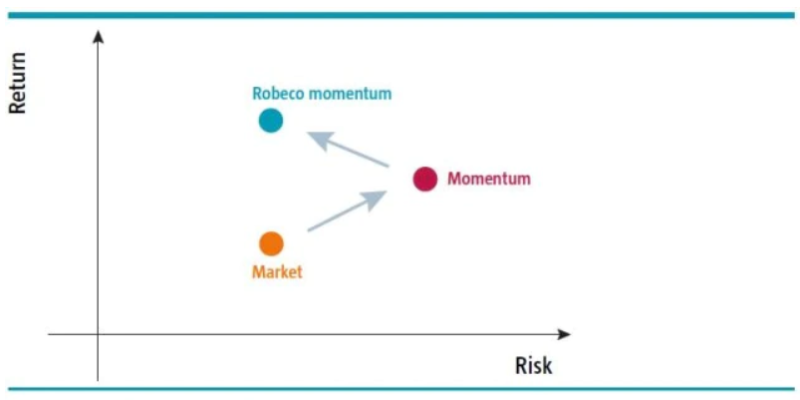Disclaimer
This page is intended for US prospects, clients and investors only and includes information about the capabilities, staffing and history of Robeco Institutional Asset Management US, Inc. (RIAM US) and its participating affiliates, which may include information on strategies not available in the US. US Securities and Exchange Commission (SEC) regulations are applicable only to clients, prospects and investors of RIAM US. Robeco BV, Robeco HK and Robeco SH are considered a “participating affiliate” of RIAM US and some of their employees are “associated persons” of RIAM US as per relevant SEC no-action guidance. Employees identified as access persons or associated persons of RIAM US perform activities directly or indirectly related to the investment advisory services provided by RIAM US. In those situations, these individuals are deemed to be acting on behalf of RIAM, a US SEC registered investment adviser. RIAM US’s SEC registration should not be viewed as an endorsement or approval of RIAM US by the SEC. RIAM US maintains its offices at 230 Park Avenue, New York, NY 10169.
By clicking I Agree, I confirm that I have read and understood the above.
Quantitative investing
Momentum factor
Stocks tend to maintain recent price trends in the future, and the momentum strategy takes advantage of this phenomenon. When using a momentum strategy, it is important to be aware of the risk of trend reversals and of how that risk can be mitigated.
The momentum premium is one of the largest factor premiums, but it is hard to capture because of two practical problems. First, a substantial drawdown can occur if there is a trend break like a market reversal, as the strategy will select equities with high market sensitivity in a bull market. Second, the group of stocks with the strongest trends changes all the time, causing high turnover in the portfolio. The transaction costs that this turnover generates eat into the momentum premium.
Figure: Improved risk-return ratio with Robeco's Momentum factor approach

Source: Robeco, Quantitative Research, 2014.
Invisible layers surface to deliver attractive returns
Unlike ‘traditional’ momentum based on total returns, Robeco calculates ‘residual’ momentum, adjusted for market risk in particular. This avoids the unrewarded risks of a traditional momentum strategy. Furthermore, smart portfolio construction rules ensure only necessary trades are done and transaction costs are minimised.















